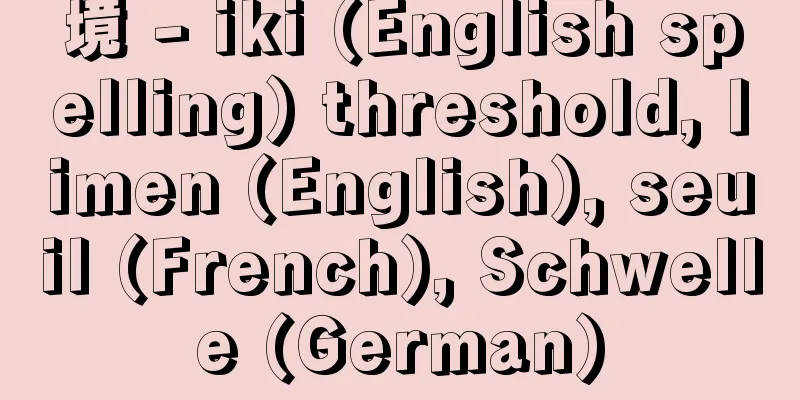Emperor Gotoba

|
The 82nd Emperor (reigned 1183-98). His name was Takahira. He was the 4th son of Emperor Takakura. His mother was Shoshi (Shichijo-in), daughter of Bomon Nobutaka. He was born on July 14, 4th year of Jisho, the year the Genpei War began. In 1183 (Juei 2), Emperor Antoku was supported by the Taira clan and fled the capital, so he ascended to the throne at the age of 4. At the time, Emperor Goshirakawa held real power in the Imperial Court, and even after the Taira clan was overthrown and the Kamakura shogunate was established, the Cloistered Emperor continued to rule the country for a while. After the death of the Cloistered Emperor in 1192 (Kenkyu 3), Emperor Gotoba took over direct rule of the country, but government affairs were first overseen by the Kanpaku (regent), Kujo Kanezane, and then by Tsuchimikado Michichika (MINAMOTO no Michichika), who became the maternal grandfather of the first prince, Tamehito. In 1198, the Emperor abdicated the throne to Prince Tamehito (Emperor Tsuchimikado) and began ruling as a retired emperor. He was 19 years old at the time. The retired emperor gradually showed an unrestrained and unrestrained nature, and after the death of Michichika in 1202 (Kennin 2), he reigned as an absolute monarch, and the retired emperor's rule continued until the reigns of Emperors Juntoku and Chukyo. The retired emperor built magnificent villas in Minase (Shimamoto-cho, Mishima-gun, Osaka Prefecture) and Uji (Uji City, Kyoto Prefecture), and also frequently went on leisure trips to various places, making pilgrimages to Kumano once every ten months. The kaishi (paper envelopes) used for poetry gatherings held during his travels have been preserved and are known as Kumano kaishi. The retired emperor was also a man of many talents in both the literary and military arts. As a poet he was one of the best of his time, and was deeply involved in the selection of the Shin Kokin Wakashu (New Collection of Ancient and Modern Poetry), and was also devoted to the biwa (Japanese lute), koto (Japanese zither), flute (Japanese flute), kemari (Japanese chess), go, and sugoroku (Japanese board game). He also enjoyed martial arts such as Yabusame (horseback archery), Inuoumono (dog hunting), Sumo (sumo), and swimming. He established warriors for the Western Division in addition to the Northern Division, and even took part in the front lines of bandit hunting. During this time, the retired emperor gradually grew increasingly resentful of the shogunate, which was not going as he wanted. These feelings of the retired emperor can be seen in a poem he composed in 1208 (Shogen 2): "I will tread through the depths of the mountains and let people know that this is a world where there is a path." The previous year, the retired emperor also built Saisho Shitennoin Temple, which is said to have been for the purpose of subjugating and cursing the shogunate. In 1219 (Jokyu 1), when the Shogun of Kamakura, Minamoto no Sanetomo, died violently, the Shogunate, by a long-standing tacit agreement, requested the retired emperor's son to go east as the successor Shogun, but the retired emperor refused, hoping for the collapse of the Shogunate. On the other hand, the retired emperor requested the abolition of the land stewards of the two manors of Nagae (Amagasaki City, Hyogo Prefecture) and Kurahashi (near Toyonaka City, Osaka Prefecture), in Settsu Province, which were the territories of his favorite concubine, Iga no Tsubone, but the Shogunate refused. Thus, the retired emperor conspired with Emperor Juntoku and his close retainers to promote a plan to overthrow the Shogunate by force. This was the Jokyu War. On May 14, 21, the retired emperor called for his troops, calling for a Yabusame parade. The warriors from the north and west side of the army, as well as those from Kinai and nearby provinces, responded to the summons, and the Shogunate's vassals in Kyoto, and even one of the Shogunate's Kyoto guardians, Minamoto Chikahiro, joined the Imperial Court. The next day, the other Kyoto guardian, Iga Tsusue, who had not responded to the summons, was killed, and the retired emperor issued an order to pursue and kill the Shogunate's regent, Hojo Yoshitoki, in various provinces. However, contrary to the expectations of the retired emperor's side, no eastern warriors responded to the order, and instead, the Shogunate army led by Hojo Yasutoki and others attacked Kyoto in large numbers. As a result, just one month after the issuance of the order, Kyoto was occupied by the Shogunate army, and the retired emperor was imprisoned in Toba Palace, and after becoming a monk in July, he was exiled to the island of Oki. His posthumous name was Kongori or Ryozen. He died on February 22, 1270, in Kanda, where he was exiled, at the age of 60. His imperial tomb is in Amacho, Oki County, Shimane Prefecture, and Ohara, Raigouincho, Sakyo Ward, Kyoto City. [Hiroya Yamamoto] In terms of literature, when the aforementioned Shin Kokin Wakashū was compiled, the Emperor himself participated in the compilation process together with the other compilers, and he also wrote the preface and the words from his perspective, making it the most complicated and long-running of all the imperial anthologies. The Emperor held poetry contests both in the capital and in Oki (such as the Fifty Poems Contest for Old and Young, the 1,500 Poetry Contest, the Genkyu Poetry Contest, the Ento Poetry Contest, and Emperor Gotoba's Own Poetry Contest). In contrast to the showy style of Shin Kokin Wakashū in the capital, in Oki there were many poems that expressed earnest feelings of nostalgia and longing for home, such as "The eaves are rough, and who can see the moon passing by at the inn, the color of the loneliness?" His family anthologies include "Gotoba-in Gyoshu" and "Toshima Gohyakushu", and his anthology of great poems includes "Jidai Fudō Utaawase". His book on waka poetry is "Gotoba-in Onkuden", which shows the difference in his view of waka poetry from Fujiwara no Teika. His diary includes "Gotoba-in Shinki". [Goto Jiro] "Gotoba-in" by Yasuda Yojuro (1939, Shichosha)" ▽ "Research on the New Kokin Wakashu, Continued, by Kojima Yoshio (1946, Shinnihon Tosho)" ▽ "Gotoba-in" by Higuchi Yoshimaro (included in "Japanese Poet Lecture Series: Medieval Poets II," 1961, Kobundo; expanded edition, 1968, Kobundo Shinsha)" ▽ "Gotoba-in" by Higuchi Yoshimaro (1985, Shueisha)" ▽ "People: Japanese History, Volume 4," edited by Nagahara Keiji (1966, Yomiuri Shimbun)" ▽ "Kyoto City, History of Kyoto, Volume 2," edited by Kyoto City (1971, Gakugei Shorin)" ▽ "Selected Japanese Poets 10: Gotoba-in" by Maruya Saiichi (1973, Chikuma Shobo)" ▽ "Nishishita Keiichi and Sanekata Kiyoshi, eds., "Augmented and Revised History of Japanese Language and Literature Research 7: Kokinshu Shinkokinshu" (1976, Sanseido)" ▽ "Kubota Jun, editor, "Waka Literature Series 24: Gotoba-in Goshu" (1997, Meiji Shoin)" [References] | | | | | | | | | | | |<Upper verse> I hate people, I hate people, it's so unpleasant <Lower verse> Because I think of the world, I am a thinking person, I hate people, it's so unpleasant Because I think of the world, I hate people, it's so unpleasant Ogura Hyakunin Isshu (99) Poet/Emperor Gotoba… Source: Shogakukan Encyclopedia Nipponica About Encyclopedia Nipponica Information | Legend |
|
第82代の天皇(在位1183~98)。名は尊成(たかひら)。高倉(たかくら)天皇の第4皇子。母は坊門信隆(ぼうもんのぶたか)の女(むすめ)殖子(しょくし)(七条院)。源平争乱の始まった年、治承(じしょう)4年7月14日誕生。1183年(寿永2)、安徳(あんとく)天皇が平氏に擁せられて都落ちしたため、4歳で践祚(せんそ)した。当時は後白河(ごしらかわ)法皇が朝廷の実権を掌握しており、やがて平氏が倒れて鎌倉幕府が成立したのちもしばらくは法皇による院政が続いた。1192年(建久3)法皇が没するに及んで、後鳥羽天皇の親政となったが、政務は、初めは関白(かんぱく)九条兼実(くじょうかねざね)の、ついで第1皇子為仁(ためひと)の外祖父(がいそふ)となった土御門通親(つちみかどみちちか)(源通親)のみるところであった。1198年、天皇は為仁親王(土御門天皇)に位を譲り、上皇として院政を開始した。時に19歳。上皇はしだいに不羈奔放(ふきほんぽう)の性質を発揮するようになり、1202年(建仁2)に通親が没して以後は専制君主として君臨、院政は順徳(じゅんとく)・仲恭(ちゅうきょう)両天皇の代まで及んだ。上皇は水無瀬(みなせ)(大阪府三島郡島本町)や宇治(うじ)(京都府宇治市)などに華麗な離宮を営み、あるいは各地へしばしば遊山旅行に出かけ、熊野参詣(さんけい)は10か月に一度という頻度であった。その途次で催された歌会の懐紙が熊野懐紙とよばれて伝存している。また上皇は文武にわたって多芸多能であった。歌人としては当代一流であり、『新古今和歌集』の撰定(せんてい)には自ら深く関与し、琵琶(びわ)、箏(そう)、笛、蹴鞠(しゅうきく)、囲碁、双六(すごろく)にも打ち込んだ。また流鏑馬(やぶさめ)、犬追物(いぬおうもの)、相撲(すもう)、水泳など武芸を好み、北面(ほくめん)に加えて西面(さいめん)の武士を置き、さらには自ら盗賊追捕(ついぶ)の第一線に加わったこともあった。この間上皇は、意のごとくならない幕府への反感をしだいに募らせていった。1208年(承元2)に詠まれた「奥山のおどろが下もふみわけて道ある世ぞと人に知らせん」という歌にも、上皇のそうした心情を読み取ることができる。またその前年、上皇は最勝四天王院(さいしょうしてんのういん)を建立したが、これは幕府を調伏(ちょうぶく)、呪詛(じゅそ)するためであったと伝えられる。 1219年(承久1)鎌倉の将軍源実朝(さねとも)が横死すると、幕府はかねての黙契によって、後継将軍として上皇の皇子の東下を要請したが、上皇はこれを拒絶した。幕府の瓦解(がかい)を期待したのである。一方上皇は、寵姫(ちょうき)伊賀局(いがのつぼね)の所領である摂津国長江(ながえ)(兵庫県尼崎(あまがさき)市)、倉橋(くらはし)(大阪府豊中(とよなか)市付近)両荘(しょう)の地頭の廃止を要求したが、幕府に拒否された。かくして上皇は、順徳天皇や近臣たちと謀って、武力による討幕計画を推進することになった。承久(じょうきゅう)の乱である。21年5月14日、上皇は流鏑馬ぞろいと称して兵を召した。北面・西面の武士をはじめ、畿内(きない)・近国の武士が召しに応じ、また在京中の幕府御家人(ごけにん)たちも、さらには幕府の京都守護の一人源親広(ちかひろ)も院方に加わった。翌日、召しに応じなかったいま一人の京都守護伊賀光季(いがみつすえ)を討つと同時に、上皇は諸国に幕府執権北条義時(よしとき)の追討令を発した。しかし、上皇方の予想を完全に裏切って、東国武士で追討令に応じる者はなく、逆に北条泰時(やすとき)らに率いられた幕府軍が大挙京都に攻め上ってきた。その結果、追討令発布からわずか1か月後には、京都は幕府軍に占領され、上皇は鳥羽殿に幽閉され、7月に出家したのち、隠岐(おき)の島へ配流された。法名は金剛理あるいは良然。延応(えんおう)元年2月22日、配所の苅田(かった)で死去。60歳。御陵は島根県隠岐郡の海士(あま)町陵、京都市左京区大原来迎院(らいごういん)町の大原陵。 [山本博也] 文学の面においては、前記『新古今和歌集』撰集(せんしゅう)に際し、院自ら撰者らとともに撰集の作業に加わり、序・詞書(ことばがき)も院の立場で記し、勅撰集中もっとも複雑長期にわたる成立の歴史を有するものとなる。院は都でも隠岐(おき)でも歌合(うたあわせ)を催し(老幼五十首歌合、千五百番歌合、元久詩歌合(げんきゅうしいかあわせ)、遠島(えんとう)御歌合、後鳥羽院御自歌合など)、都での華やかな新古今歌風に対し、隠岐では「軒は荒れて誰(たれ)かみなせの宿の月過ぎにしままの色やさびしき」などのように、懐旧の念による切実な望郷の心情のみられる歌が多い。家集に『後鳥羽院御集(ぎょしゅう)』『遠島御百首』、秀歌撰に『時代不同歌合』がある。歌学書としては『後鳥羽院御口伝(おんくでん)』があり、藤原定家との和歌観の相違を知ることができる。日記には『後鳥羽院宸記(しんき)』がある。 [後藤重郎] 『保田与重郎著『後鳥羽院』(1939・思潮社)』▽『小島吉雄著『新古今和歌集の研究 続篇』(1946・新日本図書)』▽『樋口芳麻呂著「後鳥羽院」(『日本歌人講座 中世の歌人Ⅱ』所収・1961・弘文堂/増補版・1968・弘文堂新社)』▽『樋口芳麻呂著『後鳥羽院』(1985・集英社)』▽『永原慶二編『人物・日本の歴史 第4巻』(1966・読売新聞社)』▽『京都市編『京都の歴史 第2巻』(1971・学芸書林)』▽『丸谷才一著『日本詩人選10 後鳥羽院』(1973・筑摩書房)』▽『西下経一・実方清編『増補国語国文学研究史大成7 古今集 新古今集』(1976・三省堂)』▽『久保田淳監修『和歌文学大系24 後鳥羽院御集』(1997・明治書院)』 [参照項目] | | | | | | | | | | | |〈上の句〉人もをし 人も恨めし あぢきなく 〈下の句〉世を思ふ故に もの思ふ身は ひともをしひともうらめしあぢきなく よをおもふゆゑにものおもふみは定まり字(決まり字):歌を特定する字(音)/ひとも後鳥羽天皇(後鳥羽院)菱川師宣画[他]『小倉百人一首』 1680年(延宝8)国立国会図書館所蔵"> 小倉百人一首(99) 歌人/後鳥羽天皇… 出典 小学館 日本大百科全書(ニッポニカ)日本大百科全書(ニッポニカ)について 情報 | 凡例 |
<<: Kotoba no Tamao - Words of the Lord
>>: Cotopaxi [Mountain] - Cotopaxi
Recommend
Dotera (robe) - Dotera
A Japanese loungewear for protection against the c...
Sozialdemokratische Arbeiterpartei Österreichs
…the Austrian Social Democratic Party (SOZIALDEMO...
Minne, G. (English spelling) MinneG
...The latter was active in Germany from 1901 to ...
Dry salting method
...The blood is squeezed out in the same way as f...
Ratio estimate
One of the estimation methods used in mathematical...
Qubuz (English spelling)
A plucked stringed instrument of the lute family t...
Okunu
〘Noun〙 Hemp cloth produced in Mutsu Province. It i...
Large-scale tea ceremony - Ooyosechakai
A tea ceremony in which many guests are invited. A...
Ty Cobb
1886‐1961 American Major League Baseball player. H...
Ohashi Soukei
Year of death: March 9, 11 (April 6, 1634) Year of...
Grants-in-Aid for Scientific Research
Research grants provided by the Ministry of Educat...
Weimar (English spelling)
A city in the state of Thuringia in central German...
Control approval - Control approval
…(5) En-route air traffic control: This is the ai...
Persian Wars
A war fought in the first half of the 5th century...
Phimai Temple - Phimai Temple
The ruins of a Khmer temple in Phimai, 270 km nort...









